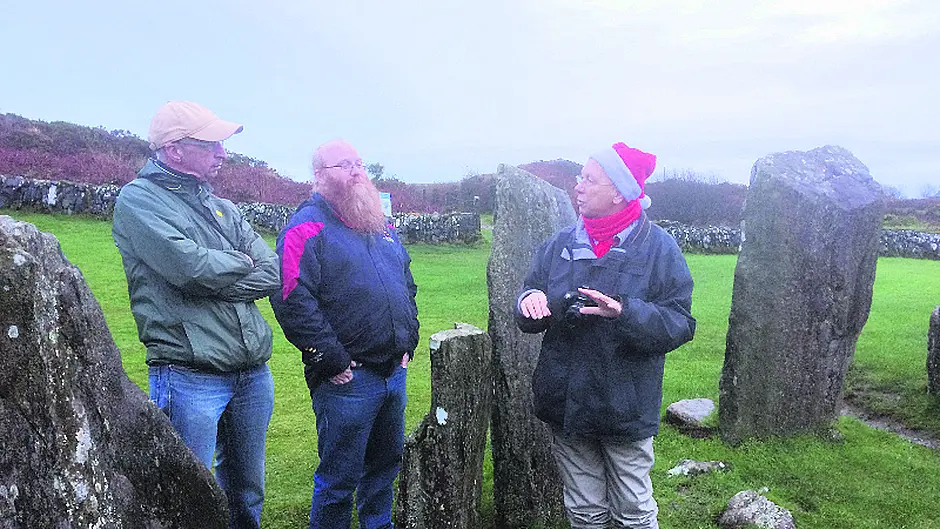A meeting room at Skibbereen Credit Union was full to overflowing on the eve of the Winter Solstice as people lined up to hear Professor Terence Meaden outline the new discoveries he has made with regard to Drombeg Stone Circle.
BY JACKIE KEOGH
A MEETING room at Skibbereen Credit Union was full to overflowing on the eve of the Winter Solstice as people lined up to hear Professor Terence Meaden outline the new discoveries he has made with regard to Drombeg Stone Circle.
Professor Meaden, who is both a physicist and an archaeologist, told members of Skibbereen Historical Society, and guests, about ‘shadow casting,’ which is considered to be ‘the divine marriage’, or union, between the mother earth and heavenly father.
Shadow casting occurs when the sun rises behind one of the male stones and a shadow forms and falls on the female stone on various dates, such as the solstices and quasi-equinoxes.
These can be viewed at sunrise on December 21st, February 5th, March 22nd, May 6th, June 21st, August 6th, September 20th, and November 5th.
Professor Meaden explained that the dates – which are spaced at intervals of 45 and 46 days – relate to the eight traditional agricultural festivals and include the solstices and quasi-equinoxes.
Using a notched tally stick, the people who built Drombeg measured the progress of the sun on the landscape before placing stones of a specific size and shape to represent the female form and other stones of a different size and shape to represent the male.
During the eight agricultural festivals the male stones fall on the female stone and form ‘a union.’
On the morning of December 21st last, it was dull and overcast at Drombeg Stone Circle. Nevertheless, there were more than a few people present who were keen to hear the professor’s theory.
He also told them that he believes there is a stone missing at Drombeg. In fact, he said he ‘knows’ there is a stone missing because, in 1903, Denham Franklin recorded a stone in the centre of the stone circle, but six years later Boyle Somerville recorded no such stone. ‘It had,’ Professor Meaden said, ‘been taken away.’
As a result, the shadow casting on one of the eight couplings contained within Drombeg now only occurs seven times a year, but not during the winter solstice.
Professor Meaden is so convinced of his findings that he has made a mock up of the stone – recreated using the measurements taken by Denham Franklin – to prove his theory.








